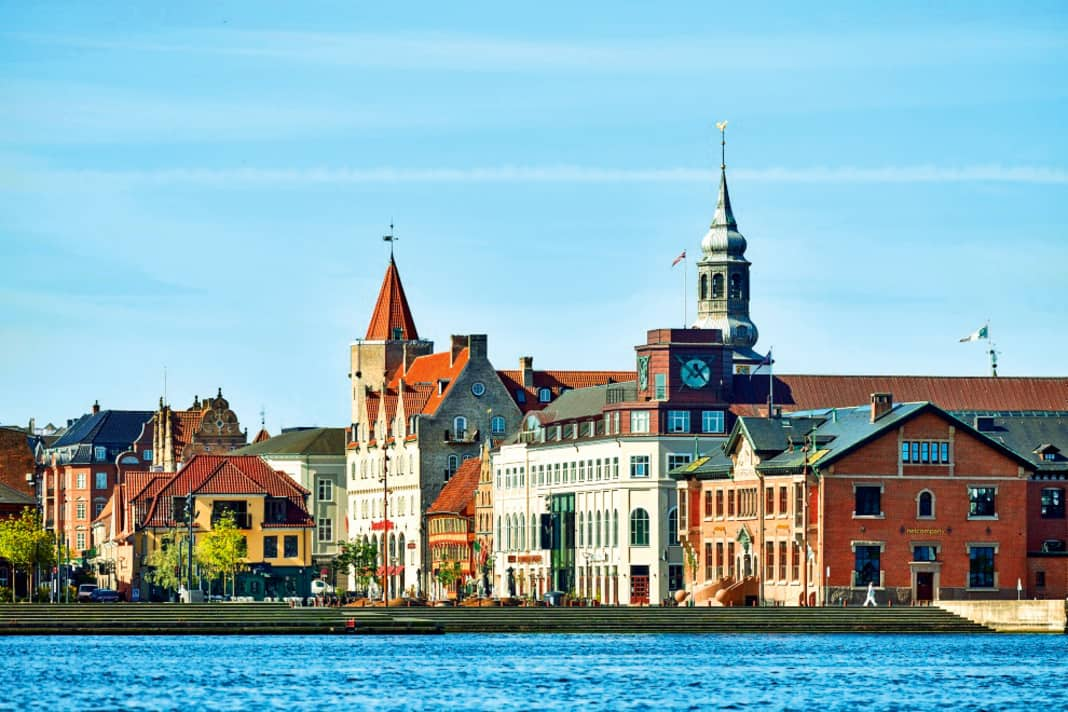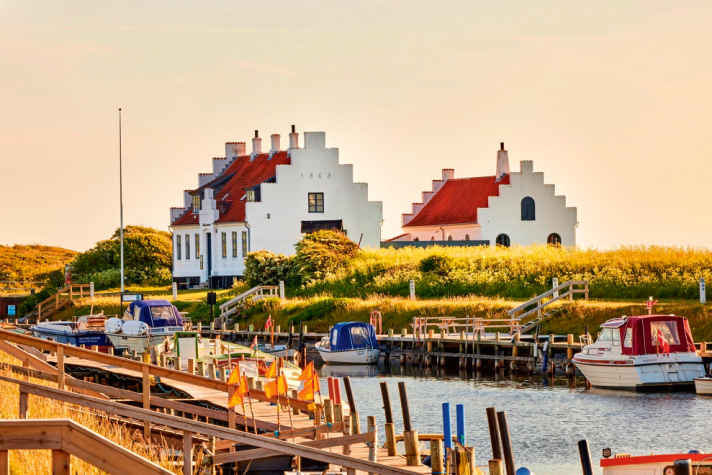




Navigation & Seamanship
Sailing the fjord from the Kattegat to the North Sea on a direct route is unproblematic for deep-draft yachts. However, if you also want to head for the outcrops and places in the outgoing sounds, you should sail a yacht with a maximum draught of 1.80 metres. The area is also ideal for trailer boat and dinghy crews. Above all, however, the inland area with its many possible lee shores and short legs is good for a varied and family-friendly cruise. Tidal range does not play a role in the Limfjord. However, strong winds from the west can cause the water level to rise by one and a half metres and from the east it can drop by almost a metre. Apart from the high bridge over the Sallingsund south of Nykøbing (26 metres), there are several bascule bridges to pass. To do so, set flag signal "N" or request an opening via channel 16. The opening times are shown on large displays on the bridges.
Wind & Weather
Mostly wind from a north-westerly direction. In strong winds, a short, unpleasant wave can form, which is particularly noticeable when heading towards the harbour. However, when the Øster blows, the locals are in high spirits: this easterly wind often lasts for weeks at very summery temperatures.
- Here you can find the trip report: Cruise through the Limfjord - Inland area with a salty flavour
Literature & Maps
- "Törnführer Dänemark 1" by Jan Werner, 39.90 euros, and DK-Sportbootkarten-Satz 6: "Limfjord-Skagerrak-Dänische Nordseeküste", 79.90 euros, both available at: SHOP.DELIUS-KLASING.DE
- Information about the area and most harbours throughout Denmark, including the Limfjord, can be found at: HAVNEGUIDE.DK
Tips for going ashore
- Danish Naval and Maritime Museum Aalborg: interesting for fans of the region's maritime history; SPRINGEREN-MARITIMT.DK
- Aalborg Natural History Museum: for those who want to know more about the exciting fjord landscape; NORDJYSKEMUSEER.DK/EN
- Danish Shellfish Centre in Nykøbing: study and taste seafood; SKALDYRCENTER.DK
- Mors Geology Museum: Stories from the Ice Age and other eras; MUSEUMMORS.DK/EN
- Aquarium Thyborøn: for big and small fish lovers; JYLLANDSAKVARIET.DK/EN
- Limfjorden Round Regatta: annual events in September with traditional sailing boats and harbour festivals throughout the area. LIMFJORDENRUNDT.DK
- Lots more information about the region: DESTINATIONLIMFJORDEN.COM
Four top destinations in the fjord
Aalborg

Denmark's fourth largest city is located at the eastern end of the fjord. The old town centre is well worth a visit. Museums, a variety of restaurants, pubs and shops invite you to visit and stroll around. There is always a place for guests in Aalborg's three marinas. Skudehavn and Vestre Bådehavn are close to the centre. You can stroll along a promenade directly on the Limfjord right into the centre of the urban diversity. Historic industrial buildings such as the aquavit distillery and modern residential and office buildings characterise the cityscape.
Løgstør

For centuries, the shallow Løgstør blocked the way from the eastern to the western part of the Limfjord and vice versa. A canal - today the guest harbour - provided a remedy. However, it became superfluous in 1899 when a deep channel was dug through the shallows. To the west of the harbour there is a beautiful beach for swimming. Historical information about the region can be found in the Limfjord Museum. And in the old boatyard, which is a Unesco cultural heritage site, ships are restored or completely rebuilt according to historical models.
Livø

Not only Danes consider Livø to be the most beautiful island in the Limfjord. In the peak summer months, the harbour is sometimes very busy. But that doesn't matter, there are plenty of good anchorages around the small island. In addition to sunbathing on the beach, a hike in the unique island nature is worthwhile. There is even a comparatively large population of wild animals - which is why dogs must be kept on a lead. On the wooden benches of the "Livø Kro & Købmandscafé" you can enjoy regional dishes and local beers in the shade of old trees on the village square.
Mors

The largest island in the region has it all: with a bit of luck, fossils of animals and plants that lived on the floor of the once tropical sea can be found in the 60 million year old sedimentary rock of the enormous Hanklit. Provided the wind conditions are right, yachts can sail up to around 60 metres from the imposing, brightly lit cliffs. In addition to geological adventures, Mors offers cultural and culinary highlights, above all the annual shellfish festival in Nykøbing - a must for every foodie!

